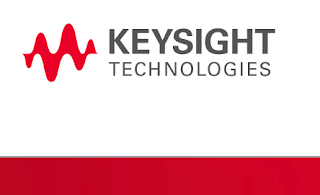Lumentum agreed to acquire Coherent in a cash and stock transaction valued at $5.7 billion, with Coherent stockholders receiving $100.00 per share in cash and 1.1851 shares of Lumentum common stock for each Coherent share they own. The combination will create a leading photonics company with significant positions in the growing market for photonics, an expansive global customer base and a well-diversified revenue mix. The transaction value represents a premium of 49% to Coherent's closing price on January 15, 2021.
Coherent, which was founded in 1966 and is based in Santa Clara, California, is a leading supplier of photonics and lasers used in the microelectronics, precision manufacturing, instrumentation, and aerospace & defense markets. For its most recent fiscal quarter ended January 2, 2021, Coherent has announced preliminary revenue in the range of $325 - $327 million.
Lumentum, which is based in San Jose, California, is a leading supplier of photonic solutions for the Telecom, Datacom, and 3D Sensing markets.
Lumentum said the acquisition of Coherent accelerates its penetration of the more than $10 billion market for lasers and photonics outside of the communications and 3D sensing applications. Lumentum also expects photonics "to play an increasing role in the accelerating shift to increasingly digital and virtual approaches to work and daily life, addressing climate change, new approaches to health care and monitoring, and addressing new safety and security." The combined company is expected to generate more than $150 million in annual run-rate synergies within 24 months of the closing of the transaction.
"Today's announcement is an important advancement of Lumentum's strategy," said Alan Lowe, Lumentum President and CEO. "In our five years as a standalone public company, we have focused on developing the most innovative products and technology in our industry and partnering with market leading customers to help them compete and win in their markets. As we look ahead, we are thrilled to join forces with Coherent to create one of the world's largest and most diverse photonics technology companies with leading positions in the growing market for photonics. Coherent brings one of the most recognizable and respected brands in the photonics industry and a very talented and innovative team. By increasing our scale, expanding our portfolio, and bolstering our R&D capabilities at a time when global markets are increasingly relying on photonics products and technologies, we are confident in our combined ability to pursue exciting new growth opportunities.
"We are excited about the combination of Lumentum and Coherent, two iconic brands in their respective photonics markets. We anticipate the combined complementary product portfolio, breadth of customer application knowledge, and R&D capabilities, all based on photonics, will accelerate innovation and adoption of photonics across the many markets that we serve," said Andy Mattes, Coherent President and CEO. "We are excited to bring Coherent's strength in OLED display manufacturing, semiconductor wafer inspection and life science instrumentation to Lumentum's portfolio, to name but a few of the key applications we serve, and believe Lumentum's expertise and scale in world class photonics components and systems will accelerate Coherent's vertical integration and addressable market expansion in several high growth areas, such as directed energy in defense and precision battery welding in automotive."
Lumentum also announced preliminary results for its fiscal second quarter of 2021 ended December 26, 2020. The company expects net revenue of approximately $478.8 million; GAAP operating margin in the range of 22.6% to 24.1%; and GAAP diluted net income per share in the range of $0.98 to $1.06.
Lumentum completes acquisition of Oclaro

Lumentum to acquire Oclaro for $1.8 billion






















